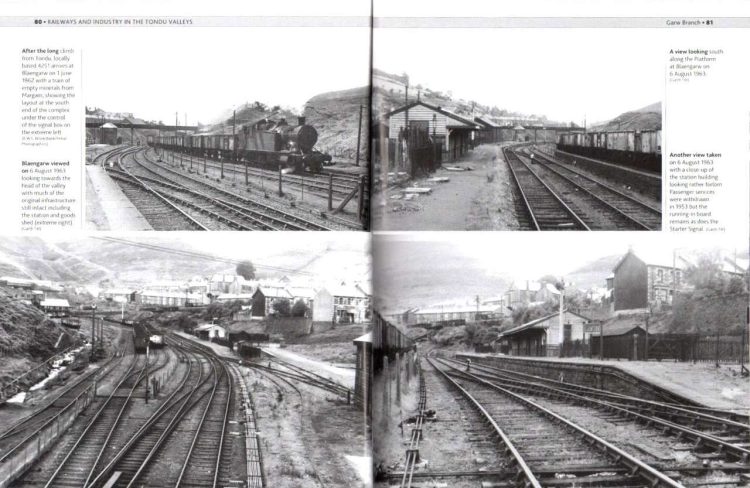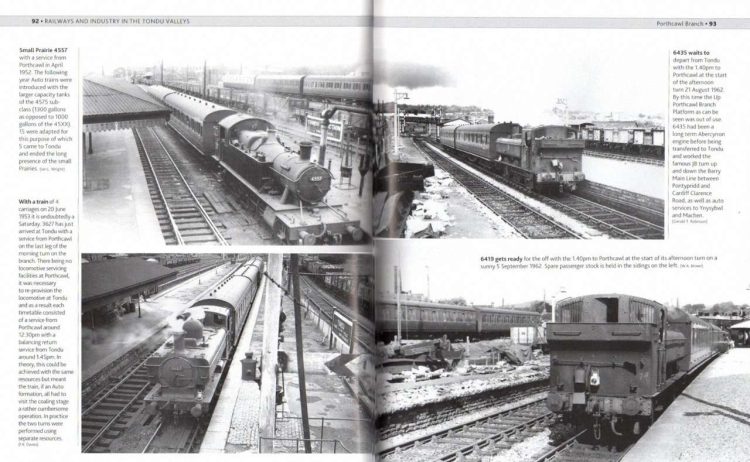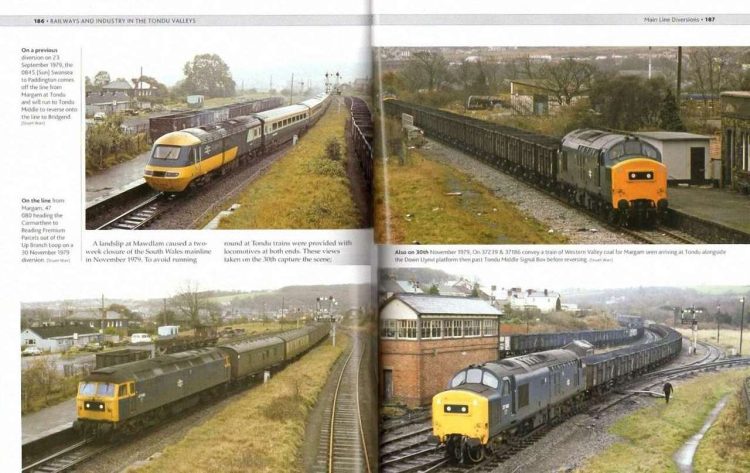Published in September 2019, this book from publishers Pen & Sword describes the branches emanating from Tondu, and is the latest in a series of books covering the South Wales Valleys.
Written by Stuart Davies and John Hodge , the hardback book measures around 28.6 cm x 22.4 cm, is 224 pages long, and has 370 colour and black and white illustrations and route maps. It has a published price of £30, although at the time of writing it can be obtained online from Pen & Sword for £21.00 and from Amazon for £19.50. The quality of the finished product is impeccable.
The book is profusely illustrated and provides detailed descriptions on the operation of the railways, both passenger and freight, and collieries along each of the branches that met at Tondu.
The author is a native of the Ogmore Valley, and as such he reveals his impressive knowledge of the area with detailed comments on the operation of the branches, their passenger and freight trains, and myriad of collieries. It is clear that his descriptions of each station and colliery could only come from someone with an intimate knowledge of the area.
The author’s in-depth descriptions of each location are accompanied by abundant photographs of railway and colliery activity.
On reading the book’s title I thought there was a mistake. I had heard of the Rhondda, Rhymney and Taff Valleys, but was unfamiliar with the Tondu Valleys. All became clear as Chapters 1 to 3 explore the branches extending northwards from Tondu – the Ogmore Branch from Tondu to Nantymoel and the Garw Branch from Brynmenyn to Nantymoel, and the Porthcawl Branch heading south.
The pages below show just how much the branches depended on coal traffic, these scenes are from the Garw Branch described in Chapter 2.

Porthcawl was the premier seaside resort in this part of South Wales. The scenes below show typical trains heading from Tondu for the seaside resort, whilst the inevitable rakes of coal wagons wait for their next turn of duty.

It was a surprise on reading the book that chapters 4 and 5 cover branches to Gilfach Goch and Llanharan, as there is no mention of them in the book’s title. They are also conspicuously absent from the overall route map included at the beginning of the book, even though there is sufficient room on the page for them. Llanharan gets a mention with an arrow pointing off the edge of the page, but no mention at all of where the Gilfach Goch branch continues off the map. The map is credited Railway Magazine, and could easily be amended to cover these branches.
Unsurprisingly, the lines covered by the book were popular with enthusiasts, as described in Chapter 6, with tours covering sixty years from 1954 to 2014.
At one time, some lines in the area were used for main line diversions, as shown by these photos from Chapter 7. As in the previous photos, the inevitable rakes of empty coal wagons are waiting their next duty.

The book concludes with an enthusiast’s photographic record of two days spent exploring the area.
Although at first sight all passenger trains were two-or four-carriage affairs hauled by 0-6-0 or 0-6-2 tank engines, the author has managed to avoid a repetitive number of identical shots. Many photos highlight the basic but functional nature of the stations and halts, but throughout it is clear that the branches’ survival depended on coal.
In summary, this is a book that brings to life what must have been a hive of activity in the heyday of coal mining. The many photos of branch trains show that passenger traffic came second to freight, whilst the range of extensive sidings in many of the photos clearly show that coal was indeed king when the branches were in their prime. This book is rated as highly recommended.
The book is available to purchase from Amazon and from Pen & Sword.
We would like to thank Pen & Sword for providing RailAdvent with a copy of the book for review.






Responses